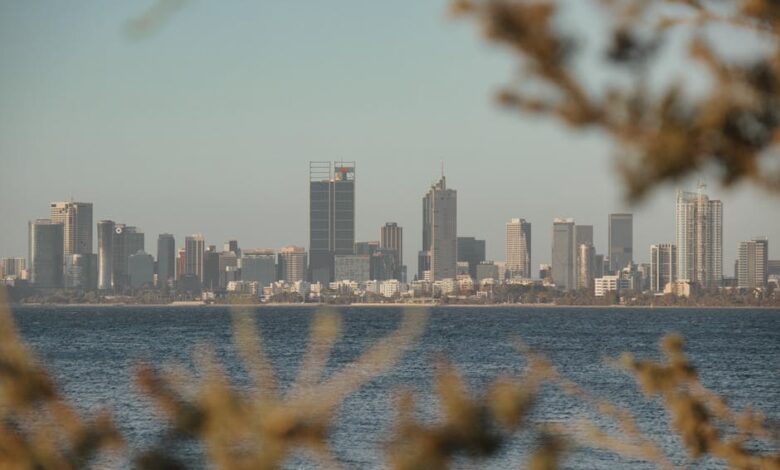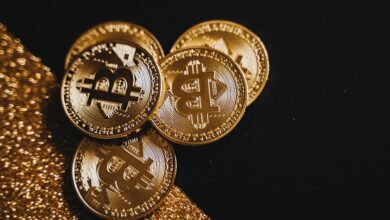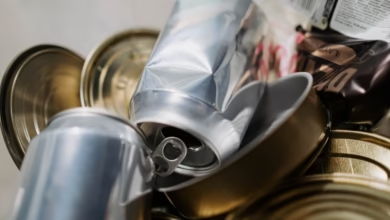Metals in Motion: Exploring Industrial Utility, Investment Trends, and Economic Indicators in a Changing Landscape

As the global economy continues to evolve, the dynamics surrounding metals—both precious and industrial—are becoming increasingly significant for investors and industries alike. This article delves into the multifaceted role of metals in today's market, exploring how silver stands out not only for its industrial applications but also for its appeal as an investment asset. We will examine copper prices as a reflection of global economic health, highlighting their importance as economic indicators. Additionally, we will investigate the surging demand for rare earth metals, fueled by the rise of green energy technologies and their implications for investment strategies.
The article will also compare platinum and palladium, two key players in the precious metals market, to determine which offers a better investment opportunity. We will discuss how metals serve as effective tools for diversifying investment portfolios, particularly in the face of inflation, which can significantly impact prices. Finally, we will consider the future of aluminum within a sustainable economy and the influence of mining regulations on metal prices. Join us as we navigate these complex interactions and assess the critical role of metals in shaping financial and industrial landscapes.
- 1. **Silver's Dual Role: Industrial Applications and Investment Appeal**
- 2. **Copper Prices as Economic Indicators: A Comprehensive Analysis**
- 3. **Green Energy and Rare Earth Metals: Navigating Demand in a Transitioning Market**
1. **Silver's Dual Role: Industrial Applications and Investment Appeal**
Silver plays a unique and multifaceted role in both industrial applications and as an investment vehicle, making it a significant metal in the global economy. On the industrial side, silver is highly valued for its exceptional conductivity, thermal properties, and resistance to corrosion. It is widely used in electronics, solar panels, medical devices, and batteries, among other applications. As industries increasingly shift towards technology-driven solutions and renewable energy, the demand for silver in these sectors continues to grow. For instance, the expansion of solar energy technologies has spurred a notable increase in silver usage, as it is a critical component in photovoltaic cells.
Simultaneously, silver serves as a traditional investment asset, often regarded as a safe haven during economic uncertainty. Investors view silver not only as a hedge against inflation but also as a means to diversify their portfolios. Its intrinsic value, coupled with its historical significance, makes it an attractive option for both seasoned and novice investors. While it does not reach the same price levels as gold, silver's lower cost allows for greater accessibility, which can drive higher demand in investment markets.
The interplay between silver’s industrial and investment roles creates a dynamic market. Changes in industrial demand can influence investment prices, while shifts in investor sentiment can affect availability for industrial uses. As economies recover and green technologies advance, silver’s dual role is likely to become even more pronounced, highlighting its importance in both sectors and reinforcing its status as a critical metal for the future.
2. **Copper Prices as Economic Indicators: A Comprehensive Analysis**
Copper prices serve as a significant barometer for global economic health due to the metal's widespread use across various industries. Often referred to as "Dr. Copper," it is considered a leading indicator because its demand correlates closely with economic activity. When economies are thriving, the demand for copper rises, driven by increased construction, manufacturing, and technological advancements. Conversely, during economic downturns, demand typically declines, leading to a drop in prices.
Several factors influence copper prices, including industrial production data, construction activity, and overall consumer sentiment. For instance, a surge in infrastructure projects and housing developments often signals robust economic growth, resulting in higher copper prices. Similarly, fluctuations in manufacturing output can directly affect demand, as copper is essential for electrical wiring in appliances, vehicles, and electronics.
Global geopolitical events and trade policies also play a critical role in shaping copper prices. For example, trade tensions or tariffs can disrupt supply chains and impact the availability of copper, causing price volatility. Additionally, developments in major copper-producing countries, such as Chile and Peru, can significantly influence global supply levels, further affecting prices.
Investors closely monitor copper price trends as they can provide insights into future economic conditions. Rising prices may indicate optimism about economic expansion, while falling prices can signal a slowdown. As a result, analysts often use copper price movements to gauge investor sentiment and make informed predictions about broader economic trends.
In summary, copper prices are not just reflective of supply and demand dynamics; they encapsulate a wealth of information about the state of the global economy, making them a crucial element for investors, policymakers, and industry leaders alike.
3. **Green Energy and Rare Earth Metals: Navigating Demand in a Transitioning Market**
The transition to green energy technologies has significantly altered the demand landscape for rare earth metals, which are essential components in various renewable energy applications. As countries strive to meet ambitious climate goals, the need for efficient energy storage, electric vehicles (EVs), and advanced electronics has surged, thereby increasing the reliance on rare earth elements (REEs) such as neodymium, dysprosium, and lanthanum.
Neodymium, for instance, is crucial for manufacturing powerful magnets used in wind turbines and electric motors, while dysprosium enhances the performance of these magnets at high temperatures. The rise of electric vehicles further exacerbates this demand, as these vehicles rely heavily on rare earth metals for their batteries and electric drivetrains. Consequently, the global market for REEs is experiencing a notable shift, driven by both government policies promoting clean energy and technological advancements that require advanced materials.
However, this burgeoning demand is not without challenges. The supply of rare earth metals is often concentrated in specific regions, with China being the dominant player in production. This concentration raises concerns about supply chain vulnerabilities and geopolitical risks. Moreover, the environmental impact of mining these metals cannot be overlooked, as extraction processes can lead to significant ecological disturbances.
As the world moves towards a more sustainable energy future, the interplay between demand for rare earth metals and the need for responsible sourcing will be critical. Companies and governments must navigate this complex landscape, balancing the urgent need for these materials with the environmental and social implications of their extraction. This evolving dynamic will shape the future of both the green energy sector and the rare earth metals market, underscoring the importance of innovation in recycling technologies and alternative materials to mitigate potential shortages and environmental harm.
In conclusion, the dynamics of the metals market present a complex interplay between industrial demand, investment potential, and broader economic indicators. Silver's unique position as both an industrial asset and a favored investment choice highlights its versatility in a rapidly changing market landscape. Similarly, copper prices serve as a barometer for global economic health, reflecting shifts in industrial activity and consumer confidence. As the world increasingly turns to green energy technologies, the demand for rare earth metals is set to rise, underscoring the importance of these materials in the transition to sustainable practices.
When considering investment opportunities, the debate between platinum and palladium illustrates the nuanced factors that influence metal valuations and investor sentiment. Furthermore, diversifying investment portfolios with metals can provide a hedge against inflation, which consistently affects the pricing of both precious and industrial metals. The future of aluminum, particularly in sustainable applications, points to its growing significance in eco-friendly initiatives.
Finally, mining regulations will continue to impact metal prices, as they shape the accessibility and supply of these critical resources. As investors and industries alike navigate this multifaceted landscape, understanding the intricate relationships between these elements will be essential for making informed decisions in both investment and industrial applications. The metals market is not just a reflection of current trends but a critical component of our economic future.





